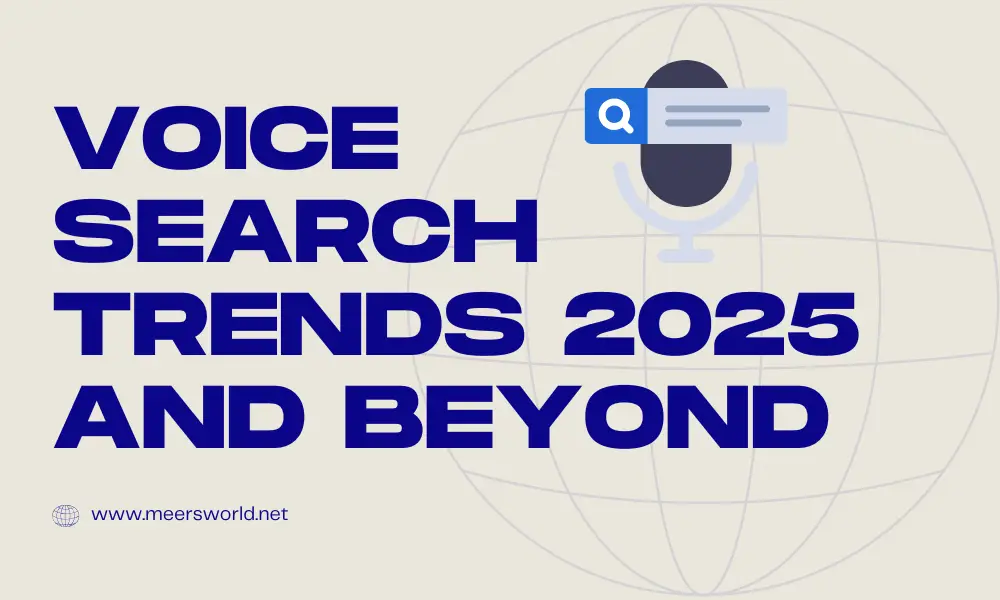Voice search has rapidly evolved from a novelty feature into a transformative technology shaping the future of digital interactions. As we move into 2025 and beyond, voice search is poised to redefine consumer behavior, search engine optimization (SEO), and the broader digital ecosystem.
| A transformative technology significantly changes industries, societies, or behaviors, often through innovation that redefines possibilities (e.g., AI, blockchain, or renewable energy). |
This article, backed by data and expert insights, explores the most significant trends shaping voice search in the coming years.
Topics
- Increased Adoption of Voice-Enabled Devices
- Key Implications
- Conversational AI and Natural Language Processing (NLP) Advancements
- Emerging Technologies
- SEO Considerations
- Voice Commerce (V-Commerce)
- Trends to Watch
- Voice Search in Emerging Markets
- Regional Highlights
- Integration with Augmented Reality (AR) and Virtual Reality (VR)
- Potential Applications
- The Role of Generative AI in Voice Search
- Business Opportunities
- Privacy and Ethical Concerns
- Key Developments
- Impact on Businesses and SEO
- Practical Steps
- Conclusion
|| Looking for amazing mobile-optimized responsive themes starting from $2? Find Here. Looking for a fast-performance web-hosting? Get Here.
01. Increased Adoption of Voice-Enabled Devices
The proliferation of voice-enabled devices, including smart speakers, wearables, and IoT devices, continues to fuel the rise of voice search.
By 2025, it is estimated that 75% of U.S. households will own at least one smart speaker. Devices like Amazon Echo, Google Nest, and Apple’s HomePod are becoming central to how consumers access information and interact with technology.
| IoT (Internet of Things) devices are internet-connected gadgets that collect, share, and act on data, like smart thermostats or wearable fitness trackers. |

1.1 Key Implications:
- Businesses must optimize for voice search across a variety of platforms and devices.
- Voice devices will increasingly utilize location, user history, and preferences to deliver more personalized responses.
02. Conversational AI and Natural Language Processing (NLP) Advancements
Advancements in AI, especially in large language models (LLMs), are making voice assistants smarter and more conversational. These systems can now understand context, nuance, and even emotions, enabling seamless interactions.
| Large Language Models (LLMs) are AI systems trained on massive text data to understand and generate human-like language. |
2.1 Emerging Technologies
Emerging technologies such as Multimodal AI and Emotion recognition allow AI to better understand context and interact more empathetically, making it useful in healthcare, education, and customer service.
Multimodal AI integrates and processes multiple types of data, such as text, images, audio, and video, to perform tasks that require a holistic understanding of diverse inputs. This capability enables applications like video captioning, conversational AI, and robotics.
Emotion recognition is the ability of AI to analyze human emotions through cues like facial expressions, tone of voice, or text sentiment.

2.2 SEO Considerations
Users phrase voice searches as full sentences (longer search queries) or questions, leading to more long-tail keyword opportunities.
Search engines prioritize meaning and intent over exact keywords, making high-quality, context-rich content critical.
03. Voice Commerce (V-Commerce)
Voice commerce is on the rise, with consumers using voice assistants for shopping, making reservations, and managing subscriptions. By 2025, voice commerce sales are expected to surpass $40 billion globally.
3.1 Trends to Watch
Voice technology is revolutionizing consumer experiences by enabling frictionless transactions through enhanced security features like voice biometrics, making purchases faster, safer, and more convenient.
At the same time, product discovery is evolving as brands optimize their presence on voice-driven marketplaces like Amazon Alexa and Google Assistant, ensuring their products are easily accessible in this growing digital ecosystem. Together, these innovations are shaping a seamless and secure shopping journey for users.

04. Voice Search in Emerging Markets
Emerging markets are experiencing rapid adoption of voice search due to increased smartphone penetration and the convenience it offers to non-literate users. Multilingual capabilities and vernacular language support are key enablers in these regions.
4.1 Regional Highlights
Voice technology is driving digital inclusion worldwide, with notable developments in regions like India and Africa. In India, the growing use of regional languages for voice search is transforming accessibility, as platforms like Google Assistant now support over 10 Indian languages, catering to a diverse population.
Similarly, in Africa, voice interfaces are bridging the digital divide by providing a user-friendly way for first-time internet users to access information and services. These advancements highlight the role of voice technology in fostering global connectivity and inclusivity.

05. Integration with Augmented Reality (AR) and Virtual Reality (VR)
Voice will play a pivotal role in controlling AR and VR environments. From navigating virtual spaces to interacting with digital objects, voice commands will enhance the usability of immersive technologies.
| Augmented Reality (AR) enhances the real world by overlaying digital elements, such as images, sounds, or 3D objects, onto the physical environment using devices like smartphones, AR glasses, or tablets. Virtual Reality (VR), on the other hand, creates an entirely immersive digital environment, isolating users from the physical world through headsets, allowing them to interact with simulated surroundings. |
5.1 Potential Applications
Augmented Reality (AR) offers users the ability to inquire about objects or locations in real-time, enhancing their learning and exploration experiences. Meanwhile, Virtual Reality (VR) platforms are incorporating voice commands for intuitive interaction within simulations, making gaming and training sessions more immersive and user-friendly.

06. The Role of Generative AI in Voice Search
Generative AI will further refine voice search capabilities. Assistants powered by AI can create summaries, draft responses, and even engage in discussions, making them indispensable for daily tasks.
| Generative AI refers to artificial intelligence systems that create new content or data based on input. These systems can produce text, images, music, and more by learning patterns from existing data and generating original outputs. Examples include language models that write essays or poems and image generators that create realistic pictures from descriptions. |
6.1 Business Opportunities:
Brands are increasingly developing custom AI assistants with unique voices and personalities, enhancing their interaction with customers. These branded voice assistants provide a more personal and engaging user experience.
Generative AI is revolutionizing content creation by crafting personalized, conversational responses that are finely tuned to user preferences. This dynamic approach allows for more meaningful and tailored interactions, setting new standards in customer engagement and satisfaction.

07. Privacy and Ethical Concerns
As voice search becomes more integrated into daily life, concerns around data privacy, surveillance, and ethical AI usage are intensifying. Companies will need to adopt transparent practices to maintain consumer trust.
7.1 Key Developments
The landscape of voice data handling is likely to undergo significant changes with the emergence of GDPR-like regulations aimed at ensuring privacy and data protection. These stronger regulations will hold companies accountable for how they collect, store, and use voice data.
Additionally, there is a growing trend towards on-device processing, where voice data is processed locally on the user’s device rather than in the cloud. This shift not only enhances privacy by minimizing the amount of personal data transmitted over the internet but also increases the speed and efficiency of voice recognition systems.

08. Impact on Businesses and SEO
The rise of voice search demands a rethinking of digital marketing strategies. Businesses must prioritize position zero (featured snippets) on search engines, optimize for local search, and create conversational content that aligns with voice queries.
8.1 Practical Steps:
- Optimize for Questions: Structure content around “how,” “what,” and “why” questions.
- Focus on Local SEO: Ensure listings on Google My Business and similar platforms are accurate.
- Create Conversational Content: Blog posts, FAQs, and guides that mimic natural speech patterns.
RELATED
- Best Content Marketing Tools for Beginners
- How to Create Content Marketing Calendar: Comprehensive Guide
- Content Marketing Mistakes to Avoid: A Comprehensive Guide
- How to Optimize Your Blog for Voice Search
- How to Use Google My Business for Small Businesses | Guide
- How to Optimize for “Near Me” Searches for Local Services
- How to Add Schema Markup to a Website
- How to Repurpose Content for Different Platforms
- Visual Search Optimization Strategies for E-Commerce Sites
- Understanding Google Lens SEO: Optimizing for Visual Search
09. Conclusion
Voice search is no longer a futuristic concept; it is the present and the future of digital interaction. From driving seamless commerce to enabling accessibility for diverse populations, voice technology is transforming how we interact with the digital world. Businesses and marketers must adapt to these trends now to stay competitive in the voice-first era of 2025 and beyond.
By staying ahead of these trends, companies can harness the full potential of voice search, creating richer, more personalized, and meaningful connections with their audiences.
If you like this post then don’t forget to share with others. Share your feedback in the comment section below.






Leave a Reply